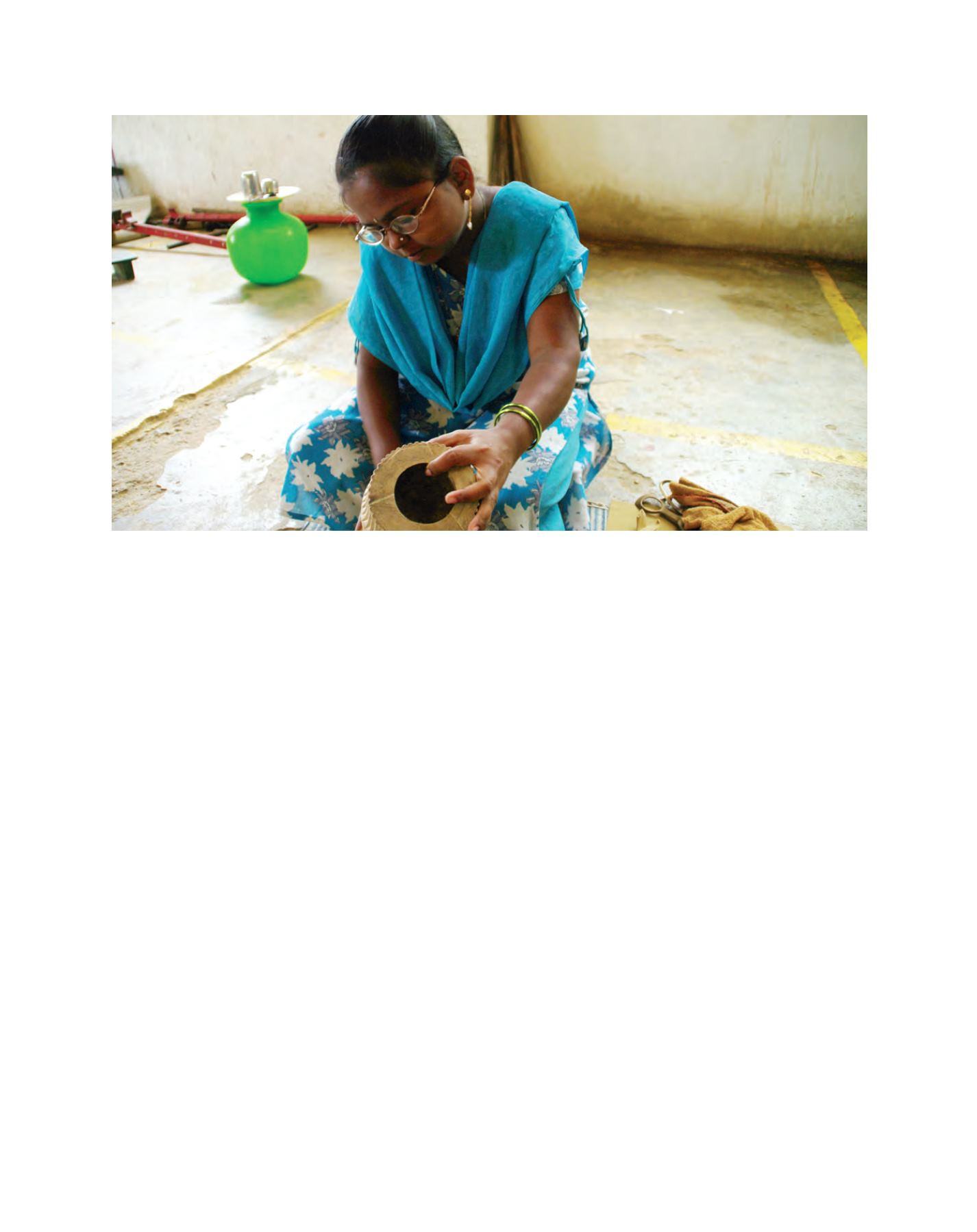

[
] 97
female. Coming primarily from the lower Mahar caste,
most had previously been employed as seasonal farm
labourers, or had no income at all. More than 4,500 local
farmers have benefited from the demand for bamboo
culms, while over 1.25 million bamboos have been planted
since 2009 to supply the growing demand.
In many parts of India, bamboo has been consid-
ered a poor man’s timber, associated with ‘backward’
castes such as the Mahar, who traditionally made their
livelihoods through bamboo craft. So when KONBAC
demonstrated what was possible with bamboo – and
penetrated the high-end tourist markets of neighbour-
ing Goa with its elegant, lightweight, durable furniture
– the Centre was able to overcome bamboo’s image
problem and provide skilled jobs for these social
outcasts. With these jobs has come pride, dignity and
social acceptance. Increasingly, entrepreneurs and
others from ‘higher’ castes in the region are recogniz-
ing the benefits of working with bamboo.
The model for bamboo-based community develop-
ment that evolved in Konkan is now being rolled out
in several other states of India, including Gujarat and
Uttarakhand, as well as Ethiopia and Madagascar, in
East Africa. With the institutional support systems
like CIBART and NMBA already in place, and with the
stigma of bamboo as the poor man’s timber on its way
out, India can provide an example to other developing
nations for how to harness this remarkable grass.
Renewable, sustainable and replicable
Many of the same unique properties that make bamboo
an ideal resource for strengthening rural livelihoods can
INBAR has developed a range of successful models for strengthening
local supply chains to drive bamboo-based community development,
designing appropriate policy approaches that protect the environmen-
tal services of forest ecosystems, and promoting consumer awareness
of how bamboo can build resilience in landscapes and in livelihoods.
These models are being replicated and scaled-up across the global south.
Affordable, versatile and durable
Bamboo is a resource for people. It requires minimal agricultural
inputs, can be harvested every year, and be processed into hundreds
of products, many of these requiring little capital investment.
Bamboo can provide a reliable and sustainable source of income for
farmers, artisans, builders and entrepreneurs; and it can do so at the
household and smallholder scale.
In India, INBAR has been working with the Centre for Indian
Bamboo Resource and Technology (CIBART), the National Mission
for Bamboo Applications (NMBA) and many other partners to
protect forest resources, enhance rural livelihoods and break down
gender and caste barriers using bamboo.
In 2003, with seed funding from the UN International Fund for
Agricultural Development, the partners joined forces to establish
the Konkan Bamboo and Cane Development Centre (KONBAC), a
community-based, non-profit enterprise situated on India’s tropi-
cal west coast. KONBAC set up bamboo furniture, packaging,
craft and construction units, which provided community members
with access to technical training and equipment. The Centre also
intervened to strengthen bamboo resources in the area, improving
species diversity and sustainable management of plantations in order
to protect natural forest resources and improve incomes for farmers.
In the eight years since, more than 750 local artisans, from 70
neighbouring villages, have gained regular employment, with average
monthly earnings between US$60 and US$80. Two thirds of these are
INBAR is working with partners in India to improve rural livelihoods by building local capacity in bamboo cultivation, processing and marketing
Image: INBAR
















